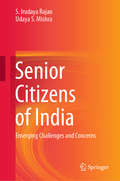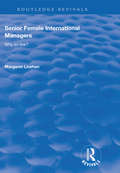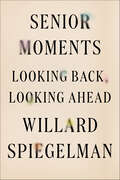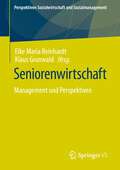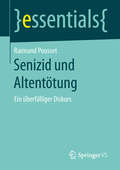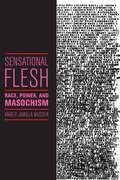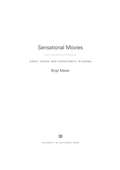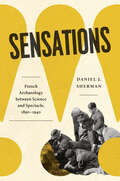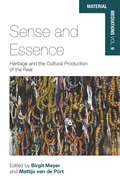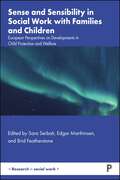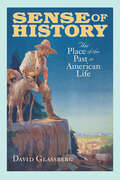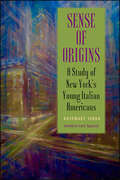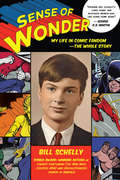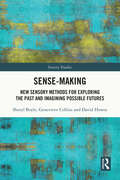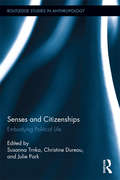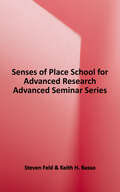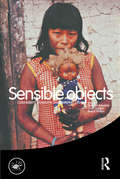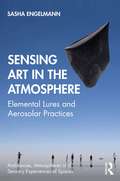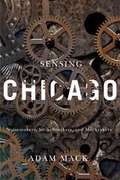- Table View
- List View
Senior Citizens of India: Emerging Challenges and Concerns
by Udaya S. Mishra S. Irudaya RajanThis book provides an overview of multiple facets of ageing and its evolving dynamics in various Indian states. It elaborates on key dimensions like health, dependence and disability, as well as living arrangements for the elderly. Drawing on information from National Sample Surveys to offer readers a broader and richer understanding of the evolving demographic reality in India, the book addresses a range of detailed policies and programmes for the elderly in India. Given its scope, the book is essential reading for students and researchers in the fields of sociology, demography, economics and development studies. It also offers a valuable reference guide for anyone engaged in planning and policy formulation for social security, welfare of the aged or mainstreaming ageing concerns.
Senior Female International Managers: Why So Few? (Routledge Revivals)
by Margaret LinehanThis title was first published in 2000: Linehan (management, Cork Institute of Technology) studies 50 European senior female managers in a variety of organizations who have made at least one career move across national borders. She compares the careers of these women with a number of theoretical explanations for the relative dearth of women in these positions. She finds that many of the problems facing domestic female managers also face international managers specifically, assumptions that management skills and organizational commitment are societally associated with masculinity.
Senior Moments: Looking Back, Looking Ahead
by Willard SpiegelmanA moving collection of essays on aging and happinessDrawing on more than six decades' worth of lessons from his storied career as a writer and professor, Willard Spiegelman reflects with candid humor and sophistication on growing old. Senior Moments is a series of discrete essays that, when taken together, constitute the life of a man who, despite Western cultural notions of aging as something to be denied, overcome, and resisted, has continued to relish the simplest of pleasures: reading, looking at art, talking, and indulging in occasional fits of nostalgia while also welcoming what inevitably lies ahead. Spiegelman's expertly crafted book considers, with wisdom and elegance, how to be alert to the joys that brim from unexpected places even as death draws near. Senior Moments is a foray into the felicity and follies that age brings; a consideration of how and what one reads or rereads in late adulthood; the eagerness for, and disappointment in, long-awaited reunions, at which the past comes alive in the present. A clear-eyed book of memories, written in eight searching and courageously honest essays, Senior Moments is guaranteed to stimulate, stir, and restore.
Senior Moments: The Perfect Gift for Those Who Are Getting On a Bit
by Freddie GreenYou know you’re having a senior moment when…… you need a pen and paper just to order a round of drinks.Getting old? Join the club! This upbeat collection of all-too-common mishaps, sprinkled with quotes from wise old sages, will have you nodding in agreement and chuckling at all your lovable foibles.
Seniorenwirtschaft: Management und Perspektiven (Perspektiven Sozialwirtschaft und Sozialmanagement)
by Klaus Grunwald Elke Maria ReinhardtDer Band skizziert Seniorenwirtschaft als einen vielfältigen Bereich des Wirtschaftens, der sich im Kern mit dem Management von Dienst- und Versorgungsleistungen befasst, die für interessierte und bedürftige ältere Menschen und Hochbetagte am Markt angeboten und von ihnen in Anspruch genommen werden. Er fokussiert dabei die Bereiche soziale Dienstleistungen, Wohnen, Betreuung und insbesondere Pflege. Der Sammelband thematisiert die wachsenden Herausforderungen für das Management und gibt einen Einblick in relevante Grundlagen, Konzepte und Methoden des Managements der genannten Bereiche der Seniorenwirtschaft. Im Zentrum steht dabei die Perspektive der verantwortlichen Führungskräfte.
Senizid und Altentötung: Ein überfälliger Diskurs (essentials)
by Raimund PoussetRaimund Pousset gibt in diesem essential eine knappe Darstellung des Senizids, die moderne Form der kulturellen Altentötung. Er beleuchtet sowohl die Geschichte als auch die aktuelle Situation einer uralten Methode. Diese seit Jahrtausenden fast überall auf der Welt praktizierte Sitte, alte ‚nutzlose‘ Menschen aktiv zu beseitigen oder sich passiv selbst zu Tode zu befördern, wird heute zunehmend wiederbelebt. Der Senizid ist in unserer modernen, aufgeklärten Gesellschaft ein namenloser und stiller Skandal. Der Autor möchte diesen stillen Tod in den Fokus einer achtsamen Fachöffentlichkeit stellen, denn die Segregation des Alters und die Kostenlawine im Gesundheitswesen lassen vermuten, dass der Senizid weiter an trauriger Bedeutung gewinnen wird.
Sensational Flesh: Race, Power, and Masochism (Secular Studies #43)
by Amber Jamilla MusserThis &“lively and enlightening contribution to queer studies&” investigates power, race, and gender through the lens of masochism (Darieck Scott, author of Extravagant Abjection). In everyday language, masochism is usually understood as the desire to abdicate control in exchange for sensation—pleasure, pain, or a combination thereof. Yet at its core, masochism is a site where power, bodies, and society come together. Drawing on rich and varied sources—from nineteenth century sexology, psychoanalysis, and critical theory to literary texts and performance art—Amber Jamilla Musser employs masochism as a diagnostic tool for probing relationships between power and subjectivity. Engaging with a range of debates about lesbian S&M, racialization, femininity, and disability, as well as key texts such as Sacher-Masoch&’s Venus in Furs, Pauline Réage&’s The Story of O, and Michel Foucault's History of Sexuality, Musser renders legible the complex ways that masochism has been taken up by queer, feminist, and critical race theories. Furthering queer theory&’s investment in affect and materiality, she proposes &“sensation&” as an analytical tool for illustrating what it feels like to be embedded in structures of domination such as patriarchy, colonialism, and racism—as well as what it means to embody femininity, blackness, and pain. Sensational Flesh is ultimately about how difference is made material through race, gender, and sexuality and how that materiality is experienced.
Sensational Movies
by Birgit MeyerTracing the rise and development of the Ghanaian video film industry between 1985 and 2010, Sensational Movies examines video movies as seismographic devices recording a culture and society in turmoil. This book captures the dynamic process of popular filmmaking in Ghana as a new medium for the imagination and tracks the interlacing of the medium's technological, economic, social, cultural, and religious aspects. Stepping into the void left by the defunct state film industry, video movies negotiate the imaginaries deployed by state cinema on the one hand and Christianity on the other. Birgit Meyer analyzes Ghanaian video as a powerful, sensational form. Colliding with the state film industry's representations of culture, these movies are indebted to religious notions of divination and revelation. Exploring the format of "film as revelation," Meyer unpacks the affinity between cinematic and popular Christian modes of looking and showcases the transgressive potential haunting figurations of the occult. In this brilliant study, Meyer offers a deep, conceptually innovative analysis of the role of visual culture within the politics and aesthetics of religious world making.
Sensationalism: Murder, Mayhem, Mudslinging, Scandals, and Disasters in 19th-Century Reporting (Journalism Ser.)
by David B. SachsmanDavid B. Sachsman and David W. Bulla have gathered a colourful collection of essays exploring sensationalism in nineteenth-century newspaper reporting. The contributors analyse the role of sensationalism and tell the story of both the rise of the penny press in the 1830s and the careers of specific editors and reporters dedicated to this particular journalistic style.Divided into four sections, the first, titled "The Many Faces of Sensationalism," provides an eloquent Defense of yellow journalism, analyses the place of sensational pictures, and provides a detailed examination of the changes in reporting over a twenty-year span. The second part, "Mudslinging, Muckraking, Scandals, and Yellow Journalism," focuses on sensationalism and the American presidency as well as why journalistic muckraking came to fruition in the Progressive Era.The third section, "Murder, Mayhem, Stunts, Hoaxes, and Disasters," features a ground-breaking discussion of the place of religion and death in nineteenth-century newspapers. The final section explains the connection between sensationalism and hatred. This is a must-read book for any historian, journalist, or person interested in American culture.
Sensations: French Archaeology between Science and Spectacle, 1890–1940
by Daniel J. ShermanDelves into two controversies from the French archaeological world to illuminate the tension between the discipline’s scientific ambitions and its hunger for media attention. For well over a century, from Heinrich Schliemann’s sensational discoveries at Troy in the 1880s, through the Tutankhamun excavations of the 1920s, to the recent LIDAR-aided uncovering of lost Maya cities, archaeology has made headlines. In this new history of archaeology and its archival traces, Daniel J. Sherman treats the friction between science and spectacle as constitutive of the field. By exploring two long-running controversies that roiled the French archaeological world and its wider public in the first third of the twentieth century, he gives the science/media relationship a unique place in the history of archaeology—and its present. The first controversy involves a dispute over the conduct of excavations at Carthage in Tunisia, then under French colonial rule. In the second, accusations of forgery clouded what seemed to be a stunning Neolithic find at a hamlet called Glozel, in the Auvergne region in central France. The affair divided the scholarly community and attracted enormous media attention across Europe and North America. Both controversies occurred at a transitional moment between what has been called the heroic age of archaeology, dominated by explorers and adventurers with little specialized training, and the beginnings of its professionalization. As Sherman shows, the two affairs put the methods, procedures, and networks of archaeology in the spotlight and profoundly shaped its history.
Sense and Essence: Heritage and the Cultural Production of the Real (Material Mediations: People and Things in a World of Movement #9)
by Birgit Meyer Mattijs van de PortContrary to popular perceptions, cultural heritage is not given, but constantly in the making: a construction subject to dynamic processes of (re)inventing culture within particular social formations and bound to particular forms of mediation. Yet the appeal of cultural heritage often rests on its denial of being a fabrication, its promise to provide an essential ground to social-cultural identities. Taking this paradoxical feature as a point of departure, and anchoring the discussion to two heuristic concepts—the "politics of authentication" and "aesthetics of persuasion"—the chapters herein explore how this tension is central to the dynamics of heritage formation worldwide.
Sense and Sensibility
by Jane AustenMarianne Dashwood wears her heart on her sleeve, and when she falls in love with the dashing but unsuitable John Willoughby she ignores her sister Elinor's warning that her impulsive behaviour leaves her open to gossip and innuendo. Meanwhile Elinor, always sensitive to social convention, is struggling to conceal her own romantic disappointment, even from those closest to her. Through their parallel experience of love - and its threatened loss - the sisters learn that sense must mix with sensibility if they are to find personal happiness in a society where status and money govern the rules of love.
Sense and Sensibility in Social Work with Families and Children: European Perspectives on Developments in Child Protection and Welfare (Research in Social Work)
by Sara Serbati, Edgar Marthinsen and Brid FeatherstonePractitioners and managers in child protection often struggle to focus on the needs of children and families in the face of ever-expanding bureaucracy. This book brings together authors from across Europe to explore the strategies and solutions that promote doing things right by those in need rather than to the letter of procedure. It argues that more flexible, community/relationship/partnership-based approaches are required to meet the needs of parents and children experiencing difficulties and risk of harm. Essential reading for academics, practitioners, managers and policy makers in social work and child welfare, it contributes to the development of reflective thinking and spotlights the potential of co-production and co-creation.
Sense of History: The Place of the Past in American Life
by David GlassbergAs Americans enter the new century, their interest in the past has never been greater. In record numbers they visit museums and historic sites, attend commemorative ceremonies and festivals, watch historically based films, and reconstruct family genealogies. The question is, Why? What are Americans looking for when they engage with the past? And how is it different from what scholars call "history"? In this book, David Glassberg surveys the shifting boundaries between the personal, public, and professional uses of the past and explores their place in the broader cultural landscape. Each chapter investigates a specific encounter between Americans and their history: the building of a pacifist war memorial in a rural Massachusetts town; the politics behind the creation of a new historical festival in San Francisco; the letters Ken Burns received in response to his film series on the Civil War; the differing perceptions among black and white residents as to what makes an urban neighborhood historic; and the efforts to identify certain places in California as worthy of commemoration. Along the way, Glassberg reflects not only on how Americans understand and use the past, but on the role of professional historians in that enterprise. Combining the latest research on American memory with insights gained from Glassberg's more than twenty years of personal experience in a variety of public history projects, Sense of History offers stimulating reading for all who care about the future of history in America.
Sense of Origins: A Study of New York's Young Italian Americans (SUNY series in Italian/American Culture)
by Rosemary SerraIn Sense of Origins, Rosemary Serra explores the lives of a significant group of self-identified young Italian Americans residing in New York City and its surrounding areas. The book presents and examines the results of a survey she conducted of their values, family relationships, prejudices and stereotypes, affiliations, attitudes and behaviors, and future perspectives of Italian American culture. The core of the study focuses on self-identification with Italian cultural heritage and analyzes it according to five aspects—physical, personality, cultural, psychological, and emotional/affective.The data provides insights into today's young Italian Americans and the ways their perception of reality in everyday interactions is affected by their heritage, while shedding light on the value and symbolic references that come with an Italian heritage. Through her rendering of relevant facets that emerge from the study, Serra constructs interpretative models useful for outlining the physiognomy and characterization of second, third, fourth, and fifth generations of Italian Americans. In the current climate, questions of ethnicity and migrant identity around the world make Sense of Origins useful not only to the Italian American community but also to the descendants of the innumerable present-day migrants who find themselves living in countries different from those of their ancestors. The book will resonate in future explorations of ethnic identity in the United States.
Sense of Wonder: My Life in Comic Fandom--The Whole Story
by Bill SchellyA fascinating story of growing up as a gay fan of comic books in the 1960s, building a fifty-year career as an award-winning writer, and interacting with acclaimed comic book legendsAward-winning writer Bill Schelly relates how comics and fandom saved his life in this engrossing story that begins in the burgeoning comic fandom movement of the 1960s and follows the twists and turns of a career that spanned fifty years. Schelly recounts his struggle to come out at a time when homosexuality was considered a mental illness, how the egalitarian nature of fandom offered a safe haven for those who were different, and how his need for creative expression eventually overcame all obstacles. He describes living through the AIDS epidemic, finding the love of his life, and his unorthodox route to becoming a father. He also details his personal encounters with major talents of 1960s comics, such as Steve Ditko (co-creator of Spider-Man), Jim Shooter (writer for DC and later editor-in-chief of Marvel Comics), and Julius Schwartz (legendary architect of the Silver Age of comics).
Sense-Making: New Sensory Methods for Exploring the Past and Imagining Possible Futures (Sensory Studies)
by David Howes Sheryl Boyle Genevieve CollinsIn this highly innovative work, the senses are liberated from the confines of the present to serve as vehicles for accessing other historical periods and imagined futures. Sense-Making builds on the burgeoning field of sensory ethnography by introducing a pair of methodologies—sensory (re)construction and sensorial extrapolationCexpressly devised to facilitate time-travel.The first part offers a survey and critique of extant work in sensory archeology and sensory futures. The second part presents a case study of sensory (re)construction in action, focusing on Thornbury Castle (1508—1521) in the UK. The third part probes the life of the senses on the "final frontier", the "next habitat" of humanity—namely, outer space. These sensory case studies are not purely architectural or purely futuristic. They are, at the same time, exercises in "arts-based practice" or "research-creation," where the authors do not just carry out bibliographic research and write about pasts and futures, they make them.Sense-Making is necessary reading for the international community of sensory studies scholars, as well as those with interests spanning material culture, museum and heritage studies, visual and auditory culture, experimental psychology, design and digital technology.
Sensemaking and Neuroaesthetics: Neuroarts and the Spectrum of Neurodiverse Experiences
by James Hutson Piper Hutson Morgan Harper-NicholsThis book investigates the complex interrelationships between neuroscience, arts, technical design, and the spectrum of neurodivergent conditions, introducing the emerging topic of neuroarts. It emphasizes the power of art and technologies as a multisensory tool for helping neurodivergent individuals discover their sensory preferences, and for neurotypical individuals to broaden their understanding of the world by simulating different sensory experiences. Drawing on the enactivism theory, which posits that cognitive processes are inherently shaped through the dynamic interplay between an organism and its environmental context, the authors discuss the applications of emerging technologies and propose a new theory to discuss and identify ‘neurotribes’ based on their relation to sense making or the body.A timely and well-needed resource for scholars in the fields of neuroaesthetics and neurodiversity, as well as art therapists, clinical psychologists, and medical practitioners specializing in neurodiversity and sensory perception disorders, this book can also serve cultural institutions developing inclusive experiences for a neurodiverse public, and professionals in the tech industry focusing on AI, augmented reality, and sensory technology.
Senses and Citizenships: Embodying Political Life (Routledge Studies in Anthropology #10)
by Julie Park Susanna Trnka Christine DureauWhat does disgust have to do with citizenship? How might pain and pleasure, movement, taste, sound and smell be configured as aspects of national belonging? Senses and Citizenships: Embodying Political Life examines the intersections between sensory phenomena and national and supra-national forms of belonging, introducing the new concept of sensory citizenship. Expanding upon contemporary understandings of the rights and duties of citizens, the volume presents anthropological investigations of the sensory aspects of participation in collectivities such as face-to-face communities, ethnic groups, nations and transnational entities. Rethinking relationships between ideology, aesthetics, affect and bodily experience, the authors reveal the multiple political effects of the senses. The book demonstrates how various elements of political life, including some of the most fundamental aspects of citizenship, rest not only upon our senses, but on their perceived naturalization. Vivid ethnographic examples of sensory citizenship in Europe, the United States, the Pacific, Asia and the Middle East explore themes such as sight in political constructions; smell and ethnic conflict; pain in the constitution of communities; national soundscapes; taste in national identities; movement, memory and emplacement.
Senses of Place (School for Advanced Research Advanced Seminar)
by Keith H. Basso Steven FeldThe complex relationship of people to places has come under increasing scholarly scrutiny in recent years as acute global conditions of exile, displacement, and inflamed borders-to say nothing of struggles by indigenous peoples and cultural minorities for ancestral homelands, land rights, and retention of sacred places-have brought the political question of place into sharp focus. But to date, little attention has been paid to the ethnography of place, to how people actually live in, perceive, and invest with meaning the places they call home. In this compelling new volume, eight respected ethnographers explore and lyrically evoke the ways in which people experience, express, imagine, and know the places in which they live. <p><p>Case studies range from the Apaches of Arizona's White Mountains to the residents of backwoods "hollers" in Appalachia and the Kaluli people of New Guinea's rain forests. As these writers confront the dilemmas and possibilities of an anthropological consideration of place, they make an important and moving contribution to our understanding of ourselves.
Senses of Place: Senses of Time (Heritage, Culture and Identity)
by G.J. AshworthBringing together case studies from Ireland, the Netherlands, Canada, Germany and Mexico, this book examines the link between senses of place and senses of time. It suggests that not only do place identities change through time, but imagined pasts also provide resources which the present selects and packages for its own contemporary purposes and for forwarding to imagined futures. The reasons behind the creation of place image are also explored, setting them within political and social contexts. In its three main sections - Heritage in the Creation of Senses of Place; Heritage and Conflicting Identities; and Heritage and the Creation of Senses of Place - the book examines the creation of place identities at the urban, rural, regional and international scales. It questions how senses of place interact with senses of ethnic/cultural identity, what the roles of government, media, residents and tourists are in creating senses of place, and how and why all these variables change through time.
Sensible Objects: Colonialism, Museums and Material Culture (Wenner-Gren International Symposium Series #5)
by Elizabeth EdwardsAnthropologists of the senses have long argued that cultures differ in their sensory registers. This groundbreaking volume applies this idea to material culture and the social practices that endow objects with meanings in both colonial and postcolonial relationships. It challenges the privileged position of the sense of vision in the analysis of material culture. Contributors argue that vision can only be understood in relation to the other senses. In this they present another challenge to the assumed western five-sense model, and show how our understanding of material culture in both historical and contemporary contexts might be reconfigured if we consider the role of smell, taste, touch and sound, as well as sight, in making meanings about objects.
Sensing Absence: Chapter 1 from Absence in Science, Security and Policy
by Brian RappertChapter 1 of this book is open access under a CC BY license.This is a chapter from Absence in Science, Security and Policy edited by Brian Rappert and Brian Balmer. This chapter is available open access under a CC BY license. Part reflection on the forthcoming chapters, part analysis of academic literature, and part programmatic agenda setting, this introduction chapter forwards the importance of questioning taken for granted assumptions in sensing what is absent as a concern. It undertakes this through initially examining what it means to characterize concern as absent or present in the first place. While absence and presence are often treated as binary opposites, it will be argued this distinction is difficult to sustain and unhelp for analysis. On the back of an appreciation of the inter-relation of absence and presence, this chapter then reviews the literature in sociology, ethics, STS and elsewhere relevant to the themes of the volume. A goal is to outline the methodological and epistemological possibilities and problematics of studying what is missing. By way of then proposing what is required, and to set the stage for the other chapters in Part 1, this chapter ends by asking how autostereograms provide a metaphor for viewing that can guide the study of absence.
Sensing Art in the Atmosphere: Elemental Lures and Aerosolar Practices (Ambiances, Atmospheres and Sensory Experiences of Spaces)
by Sasha EngelmannThis book engages artistic interventions in the aerial elements to investigate the aesthetics and politics of atmosphere. Sensing Art in the Atmosphere: Elemental Lures and Aerosolar Practices traces the potential of artistic, community-driven experiments to amplify our sensing of atmosphere, marrying attentions to atmospheric affect with visceral awareness of the materials, institutions and processes hovering in the air. Drawing on six years of practice-led research with artistic and activist initiatives Museo Aero Solar and Aerocene, initiated by artist Tomás Saraceno, each chapter develops creative relations to atmosphere from the studio to stratospheric currents. Through narrative-led writing, the voices of artists and collaborators are situated and central. In dialogue with these aerographic stories and sites, the book develops a notion of elemental lures: the sensual and imaginative propositions of aerial, atmospheric and meteorological phenomena. The promise of elemental lures, Engelmann suggests, is to reconcile our sensing of atmosphere with the myriad social, cultural and political forces suspended in it. Through tales of floating journeys, shared envelopes of breath and surreal levitations, the book foregrounds the role of art in crafting alternative modes of perceiving, moving and imagining (in) the air. The book ends with a call for elemental experiments in the geohumanities. It makes an important and original contribution to elemental geographies, the geohumanities and interdisciplinary scholarship on air and atmosphere.
Sensing Chicago: Noisemakers, Strikebreakers, and Muckrakers
by Adam MackA hundred years and more ago, a walk down a Chicago street invited an assault on the senses. Untiring hawkers shouted from every corner. The manure from thousands of horses lay on streets pooled with molasses and puddled with kitchen grease. Odors from a river gelatinous and lumpy with all manner of foulness mingled with the all-pervading stench of the stockyard slaughterhouses. In Sensing Chicago, Adam Mack lets fresh air into the sensory history of Chicago in the nineteenth and early twentieth centuries by examining five events: the Chicago River, the Great Fire, the 1894 Pullman Strike, the publication of Upton Sinclair's The Jungle, and the rise and fall of the White City amusement park. His vivid recounting of the smells, sounds, and tactile miseries of city life reveals how input from the five human senses influenced the history of class, race, and ethnicity in the city. At the same time, he transports readers to an era before modern refrigeration and sanitation, when to step outside was to be overwhelmed by the odor and roar of a great city in progress.
